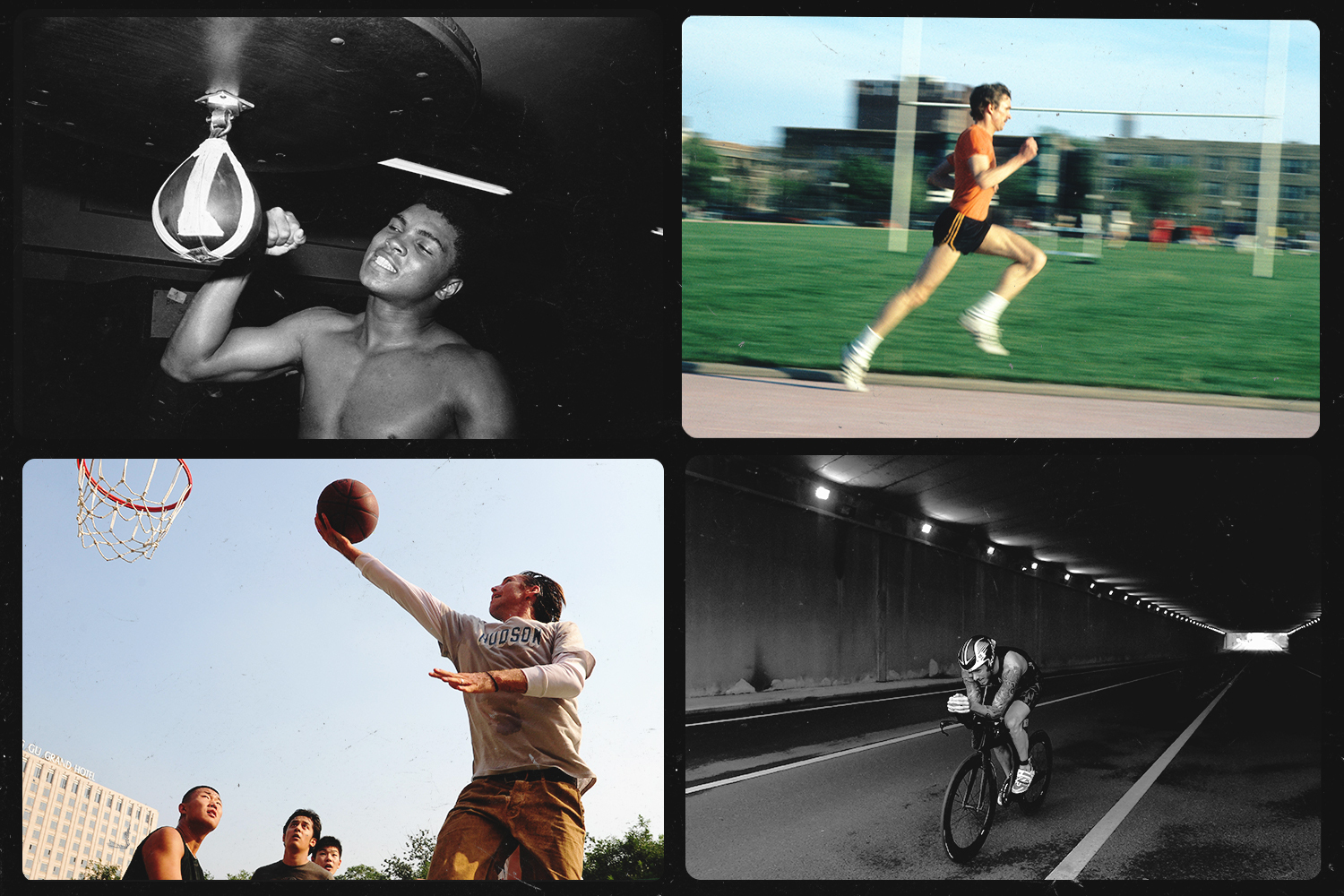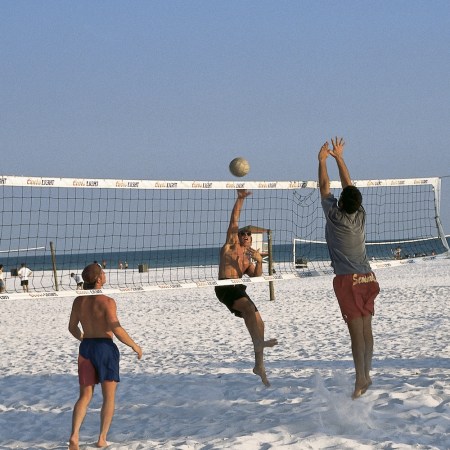I did a big shop at Trader Joe’s the other day, and drew the dreaded three-bag-walk-home. I must’ve stopped 15 times on the trip back. When I finally made it to my apartment, I collapsed on the couch, heaving. My carton of eggs had survived the struggle, but my heart rate was through the roof.
The entire experience was humbling for a millennial currently in the midst of marathon training. It was also an eye-opening reminder that everyday tasks are difficult for anyone…but especially for adults who are getting up there in years.
Longevity expert Peter Attia has a fascinating framework for forward-thinking living: pick 10 physical tasks you want to be able to do until you die. His personal “Centenarian Decathlon” is a mixture of everyday and exciting (“open a jar” is on there — as are “do 30 consecutive jump-rope skips” and “have sex.”) Attia stresses that the more ambitious your list is, the earlier you need to start training in support of it.
Whether or not you can imagine yourself playing 18 holes or lifting a cast-iron skillet with one hand in your senior years — two common decathlon choices, believe it or not — there are certain, lifelong things you’ll always want (or in some cases, need) to be capable of accomplishing under your own power. Like tying your shoes, or opening a window, or yes, carrying groceries.
These challenges seem so trivial and obvious for the majority of our lives, that the idea of losing them one day rarely crosses our minds. But as energy, muscle strength and bone density decline over the decades, everything gets harder. And losing the ability to complete a task means losing some degree of autonomy and independence over one’s life. (Depression is rising in the senior population, for three key reasons: loss, isolation and poor physical health.)
That’s why we recommend implementing a fitness routine that’s as functional as possible, as early as possible. We’ve paired 10 lifelong tasks with 10 functional fitness exercises. These moves aren’t perfectly one-to-one, but they simulate each everyday function well, and do a fantastic job of simultaneously building strength in the body and fostering self-confidence in the brain.
The Charge by InsideHook
A wellness newsletter to help you move better, think clearer and stay in the game longer. One email every Monday — we’re building habits, not chasing hacks.
Carrying Groceries
Farmer’s Walk: The exercise that I evidently need the most the right now! Farmer’s carries quite closely mimic the act of carrying heavy bags from the store. Stand holding a heavy dumbbell (or kettlebell) in each hand, arms extended at your sides. Keep your core engaged and shoulders back as you walk forward for a set distance or time. To activate your grip strength a bit — and maximize your space to maneuver — consider loading two similar backpacks with weights and walking the length of your local football field a few times.
Lifting a Child off the Ground
Deadlift: (Or to lift anything heavy off the ground from a static position, really, though this is the most heartwarming example.) Deadlifts, one of the gym’s most foundational moves, engage the very same muscles you would need to pick up a duffel bag or grandchild. Stand with your feet shoulder-width apart, bend at the hips and knees, grip a barbell or pair of dumbbells, and stand up by engaging your glutes and hamstrings. Keep the weight low-stakes and easy until you have the form down.
Reaching for Items on a High Shelf
Shoulder Press: It’s important to have a step ladder around as you age, but there are going to be situations where you have to grab something from the top of the pantry. Or, perhaps, put your luggage in the compartment rack of a plane. (Travel the world is another popular decathlon answer.) The shoulder press helps cultivate the strength required to push items upward or to reach overhead. Sitting or standing, press a pair of dumbbells from shoulder height to overhead. For advanced lifters: use a pair of upside down kettlebells.
Tying Your Shoes
Goblet Squat: Accessing the bottom of your body to put on socks or tie one’s shoes takes flexibility, of course, but it also requires mobility, balance and strength. Goblet squats have a great track of honing all the above. Holding a kettlebell close to your chest, perform a squat. Make sure your knees track over your toes.
Pushing Furniture
Push-Up: You will move, you will help others move, you will replace and/or rearrange things. Moving furniture is fundamental to modern life, so naturally it necessitates the most fundamental strength training move available to us. Push-ups source the primary muscles in the chest and arms, which are exactly what you need to push something heavy. If regular push-ups are too challenging, modify by doing them on your knees or against a wall. (In some instance, the latter is a carbon copy of the real-life move.)
Can the “Flow State” Save Us From Distraction?
Coined by psychologist Mihaly Csikszentmihalyi, flow offers rare clarity. We asked athletes, chefs and musicians how they find it again and again — and how you can, too.Pulling Open a Window
Bent Over Rows: Particularly a pesky stuck window. Or, perhaps, lifting a garage door that isn’t motorized. This exercise strengthens the back muscles, which are essential for any pulling action. Holding a dumbbell in each hand, hinge forward slightly from the hips and pull the weights up towards your hip. (Make sure to limber up before attempting this one. In this sedentary era, everybody’s got a tight back.)
Walking up Hills
Lunges: Hills can largely be avoided, assuming you don’t live in San Francisco. But walking up them and earning that view at the top is one of life’s simple joys. (Besides, you can’t and shouldn’t dodge stairs, anyway.) Lunges are one of the best methods for replicating the motion of climbing; they effectively target the quads, hamstrings and glutes. Holding a dumbbell in each hand at your sides, step forward and lower your body until both knees are bent at a 90-degree angle. Push back to the start position and repeat on the other leg.
Gardening
Plank: One of the less intuitive pairings here, but a strong core is indispensable for all the bending and stooping required to properly maintain a backyard. Planks are the best in the business at strengthening the midsection and supporting the spine. A regular plank habit (work up to one, one-minute hold a day) will make sure you aren’t groaning each time you get down in the flowerbed. If the move is too difficult at first, try a modified version with your knees on the ground.
Vacuuming
Woodchoppers: Shoveling, raking and sweeping also come to mind here. Woodchoppers simulates the motion used in household “twisting tasks.” Holding a dumbbell or medicine ball (I prefer the latter) with both hands, twist your torso to one side while lifting the weight diagonally above your head, then bring it down and across your body in a “chopping” motion. This will stabilize the core, so it should ease some low back tension along the way, too. Oh, and it won’t just get you better at chores…woodchoppers should improve your golf, tennis and pickleball skills, too.
Moving Items Upstairs
Step-Ups: For seniors, carrying something heavy up a flight of stairs is an unholy blend of three or four tasks on this list. It asks something of almost every part of the body, from the tiny muscles in the fingers to the big ones in the thighs. Weighted step-ups are a great way to mirror this challenge. Holding a dumbbell in each hand, step up onto a bench or platform and then step back down. Go slow — it wouldn’t be a race in real life, so it shouldn’t be in training — and take it one step at a time. You’ll get there.
The Charge will help you move better, think clearer and stay in the game longer. Subscribe to our wellness newsletter today.



























